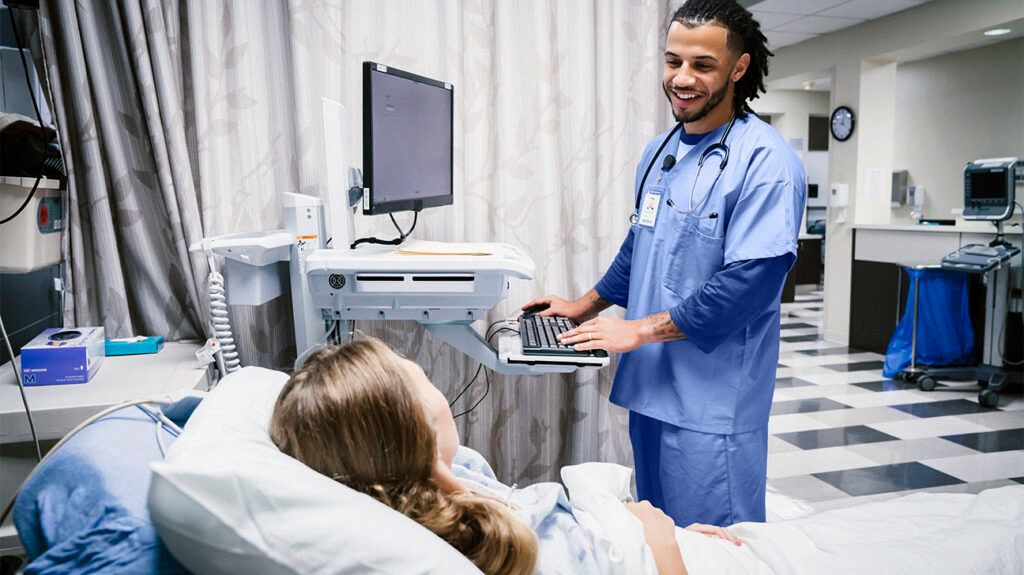If nonsurgical treatments do not relieve a person’s thoracic outlet syndrome symptoms, a doctor may suggest surgery to relieve compression in the thoracic outlet. Surgery may include a first rib resection or balloon angioplasty.
Thoracic outlet syndrome (TOS) is a group of disorders that involve compression of the arteries, nerves, and blood vessels in the space between the first rib and collarbone, called the thoracic outlet.
TOS may cause pain, weakness, and numbness and can affect a person’s range of motion. Treatment typically involves medication, physical therapy, or both. It does not usually require surgery. However, if nonsurgical treatment is unsuccessful, a doctor may suggest surgery.
There are several approaches to TOS surgery. A person’s doctor may discuss the advantages and disadvantages of each, as well as their probable outcomes.

Surgery is
The most common surgical procedures to treat TOS are a first rib resection and a scalenectomy or scalenotomy. These involve a surgeon removing part of the first rib and removing or severing the scalene muscles between the neck and chest.
The surgery aims to reduce compression on a group of nerves called the brachial plexus.
Transaxillary surgery
This is the
The surgeon creates an incision between the pectoralis major — the large, fan-shaped muscle extending across the chest — and the latissimus dorsi muscle extending from the middle to the lower back.
They then dissect the front and middle scalene muscles and remove the first rib.
Supraclavicular surgery
In this approach, a surgeon makes an incision
Infraclavicular surgery
This is the
A surgeon makes an incision
Robotic and thoracoscopically assisted surgeries
More
In these surgeries, doctors create
Surgeons may use a robotic assistance device guided by the image from the thoracoscope to remove a portion of the first rib and some of the surrounding muscles.
Balloon angioplasty or venoplasty
A person with venous TOS may require surgery to widen narrow arteries or veins after a first rib resection.
For these procedures, a surgeon inserts a catheter attached to an inflatable balloon into the arm through an artery (during an angioplasty) or a vein (during a venoplasty). They then guide the catheter into the thoracic outlet and inflate the balloon.
The preparation for TOS surgery may involve:
The transaxillary, supraclavicular, infraclavicular, and robotic and thoracoscopically assisted surgeries
In each of these surgical approaches, surgeons remove a portion of the first rib and sometimes the scalene muscles and other nearby muscles.
The surgery relieves pressure on the nerves and blood vessels, which can improve symptoms like pain, numbness, and weakness.
The major differences between each approach are the areas of incision. Where the surgeons make their incisions
For a balloon angioplasty or venoplasty, the surgeons aim to widen arteries or veins that may have narrowed due to venous TOS.
In this condition, the subclavian vein may travel through a narrow space in the thoracic outlet, which
Recovery for first rib resection procedures is generally
Although the speed of recovery can differ depending on a person’s overall health and other factors, people can usually leave the hospital 1 to 2 days after surgery.
A healthcare professional may instruct people on movement and breathing exercises to perform during recovery. These can help prevent blood clots and clear the lungs.
A person can usually go home within a few hours of a balloon angioplasty or venoplasty and return to their usual activities within a week.
A healthcare professional may also prescribe pain medication and advise a person on caring for their incision wounds at home.
Researchers in a long-term 2021 study suggest that
However, other researchers have reported less favorable rates of success.
The
Doctors routinely advise against major surgery to treat TOS due to the potential for complications.
Risks of first rib resection
- nerve damage
- infection
- excessive bleeding
- improper wound healing
- pneumonia
- cardiac arrest
- intubation, which may lead to complications such as:
- bleeding
- throat injury
- aspiration
- failure to wean off the ventilator
- pulmonary embolism
Risks of angioplasty include:
- bruising and bleeding
- blood clots
- narrowing of the artery
What is the best treatment for thoracic outlet syndrome?
Treatment for TOS usually involves physical therapy to strengthen muscles and improve posture and nonsteroidal anti-inflammatory drugs (NSAIDs) to reduce swelling and pain.
How risky is thoracic outlet surgery?
Researchers
Angioplasty is a low risk procedure, and complications are rare.
How painful is thoracic outlet surgery?
People may experience different levels of pain and discomfort after decompression surgery. Healthcare professionals can provide medication intravenously or orally to help manage pain.
Thoracic outlet syndrome (TOS) refers to several conditions that involve compression in an area of the chest called the thoracic outlet.
Treatment for TOS typically involves physical therapy and medication. If nonsurgical treatment does not work, a doctor may recommend surgery.
Surgery for TOS usually involves removing a part of the first rib and sometimes some nearby muscle to relieve compression.
